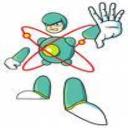Yahoo Answers is shutting down on May 4th, 2021 (Eastern Time) and beginning April 20th, 2021 (Eastern Time) the Yahoo Answers website will be in read-only mode. There will be no changes to other Yahoo properties or services, or your Yahoo account. You can find more information about the Yahoo Answers shutdown and how to download your data on this help page.
Trending News
Physics assistance?
A large rock is being transported on a trailer by a landscaper. If the rock slides across the truck bed it will damage the lining of the bed. If the coefficient of static friction between the rock and the truck bed is 0.5 and the truck is travelling at 55km/hr…
What is the maximum acceleration the truck can experience if it needs to stop at a stoplight?
Over what distance could the truck stop?
2 Answers
- electron1Lv 71 year agoFavorite Answer
The first step is to convert the truck’s velocity from km/h to m/s. One kilometer is 1,000 meters. One hour is 3,600 seconds.
1km/h = 1,000/3,600 = 5/18 m/s
v = 55 * 5/18 = 275/18
The truck’s initial velocity is approximately 1.53 m/s. The friction force will cause the truck to decelerate.
Ff = -μ * m * g
a = -0.5 * 9.8 = -4.9 m/s^2
Let’s use the following equation to calculate the distance for the truck’s velocity to decrease from approximately 1.53 m/s. to 0 m/s.
vf^2 = vi^2 + a * a * d
0 = (275/18)^2 + 2 * -4.9 * d
9.8 * d = (275/18)^2
d = (275/18)^2 ÷ 9.8
The distance is approximately 24 meters. I hope this is helpful for you.
- az_lenderLv 71 year ago
Frictional force = mu*mg = (4.9 m/s^2)*m.
The truck's acceleration needs to have an absolute value less than 4.9 m/s^2. So the shortest stopping distance would be found from
2*(4.9 m/s^2)*x = (55000 m/3600 s)^2 =>
x = (233.4 m^2/s^2)/(9.8 m/s^2)
= around 24 meters but use a calculator.



